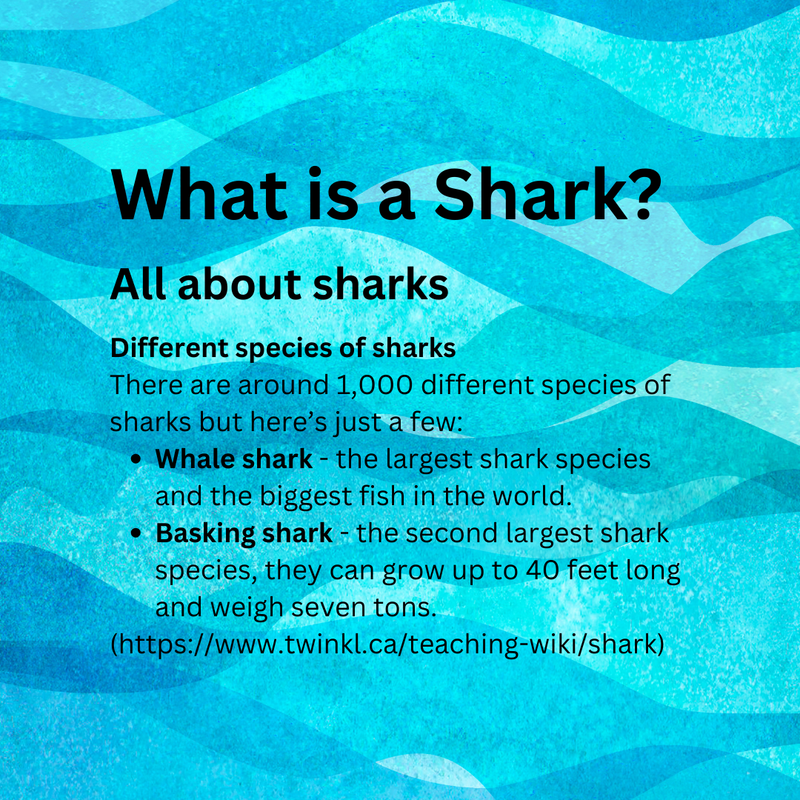Titles, Headings, Bolding, and More

ELAL Learning Outcome (Knowledge) - Features that clarify and organize messages can be digital or non-digital, including color, font, bolding, titles, and headings.
This activity allows students to explore digital text and how titles, subtitles, bolding, font, and color help to organize the message and direct the attention of the reader to what is important in the message.
Lesson:
Objective: Features that clarify and organize messages can be digital or non-digital, including color, font, bolding, titles, and headings.
Media Sample #1:
All about sharks
Sharks are a fish that can measure up to 32.8 feet and weigh up to 20.6 tons...
Sharks are predators and have multiple rows of pointy teeth - did you know they fall out and routinely grow back on a routine basis?
Different species of sharks
There are around 1,000 different species of sharks but here’s just a few:
- Whale shark - the largest shark species and the biggest fish in the world.
- Basking shark - the second largest shark species, they can grow up to 40 feet long and weigh seven tons.
- Shortfin mako shark - thought to be the fastest shark species and can grow to 13 feet and weigh 1,220 pounds.
- Thresher shark - there are three types of thresher shark: the common thresher, pelagic thresher and the big eye thresher...
(https://www.twinkl.ca/teaching-wiki/shark)
Media Sample #2:
How can I use this shark fact file?
Dive into the underwater world of sharks in class with this wonderful shark fact file. The tiger shark, the great white shark and the hammerhead shark are just some of the fascinating shark species that live in our oceans. Sharks are one of the oldest creatures on the planet and every single one is strange and beautiful.
Use this lovely shark fact file and reading comprehension activity to get children excited to learn all about sharks in their lessons. This shark fact file is a differentiated reading activity, so you can use the different variations for students with diverse reading ability...
(https://www.twinkl.ca/teaching-wiki/shark)
Key Questions:
What is the title of the first sample? What helped you know this? (title)
What other information will you find in this text? How do you know that? (subtitle)
What words stand out in the text? Why do you think these words are bolded? (bolding)
Does the size of the print or font change? Why do you think authors do this? (font)
Does the color of the font change? What might be some reasons for doing this? (second media sample - color)
How does changing the size of the font, bolding certain words and phrases, and changing the color of the font helps you when you are looking for information?
Application:
Working in small groups, students could apply what they have just discussed to a digital text of their choice, something like dinosaurs, dogs, or other topics of interest. Students are challenged to find the title, subtitles, bolded words, coloured words, and changes in the size and style of font. They can jot down or discuss orally what information they learned just by using these textual elements.
Follow-up:
As the school year progresses, students are encouraged to identify these elements in the texts they read and to notice what information they are able to gather from these elements.